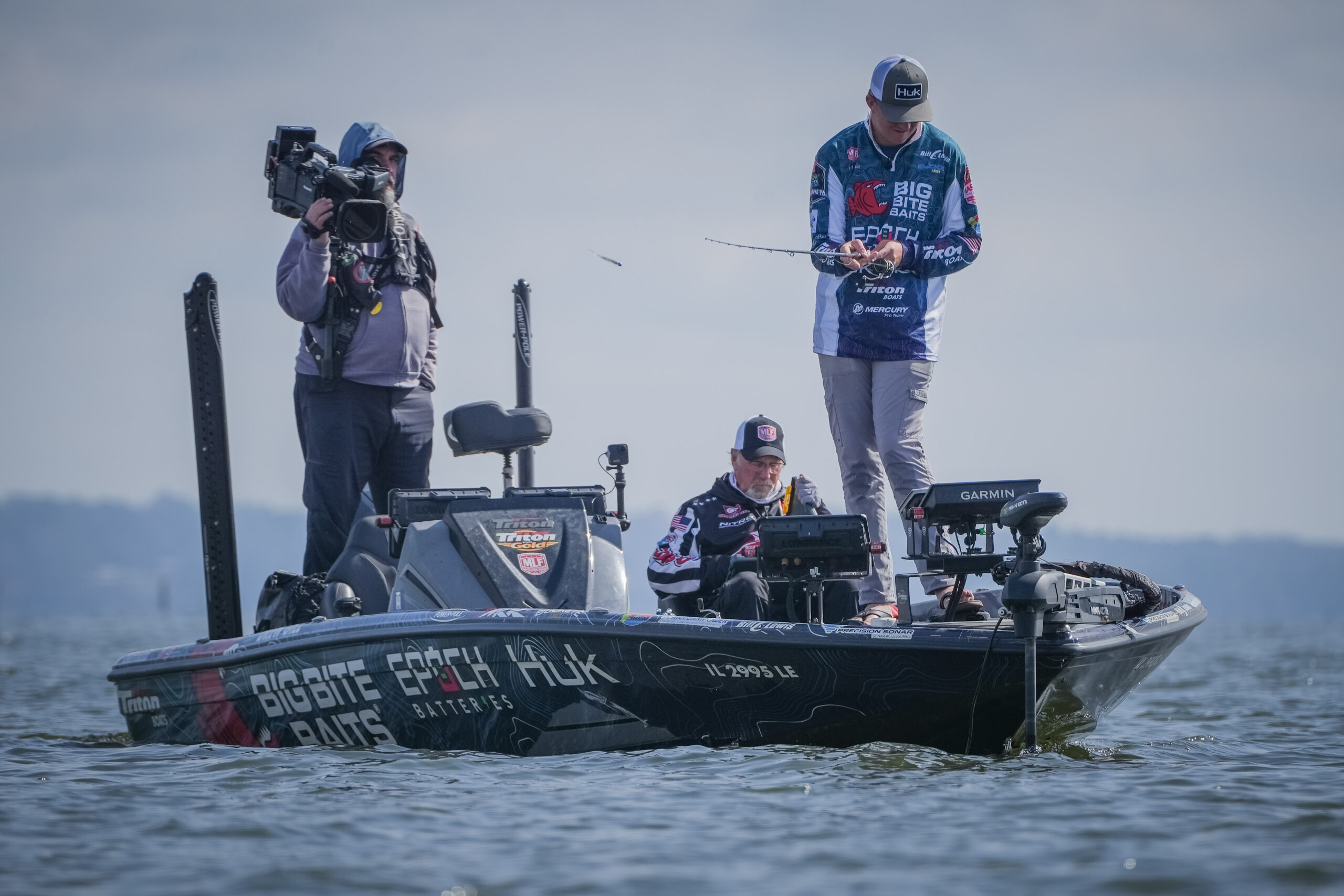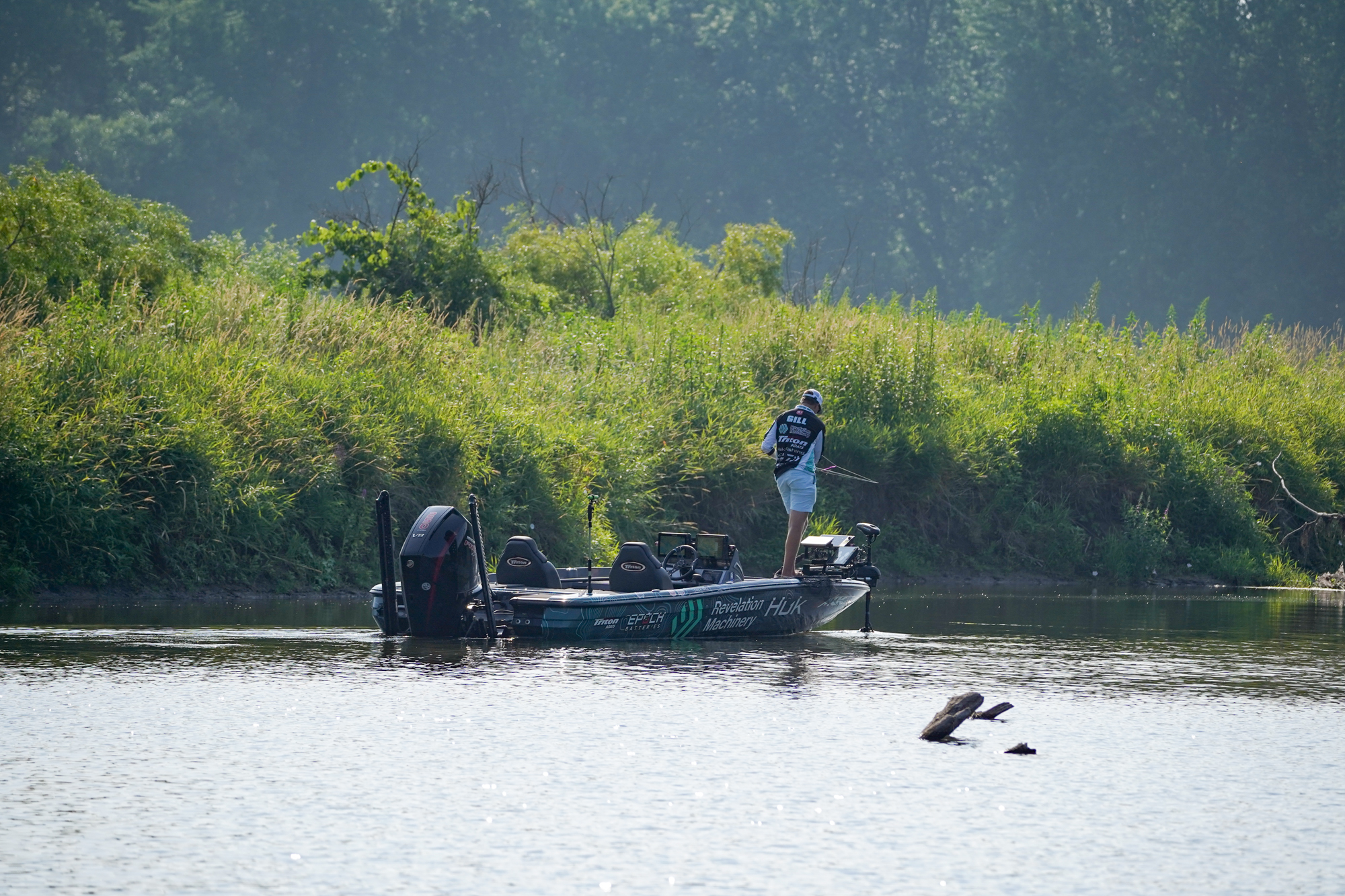DREW GILL: Pure forward-facing is not for everyone

Ever since I won the Tackle Warehouse Invitationals event on Sam Rayburn in early February, people have been surprised to hear that all I do is LiveScope. It’s true: I got LiveScope in 2020 when I was 18 years old. From the very moment I saw fish on that screen, it all just clicked for me.
Since that day, I’ve been a pure LiveScoper. I’d estimate that 75% of all the bass I’ve caught in my life have come from forward-facing sonar. I’d even go so far as to say that every check I’ve ever made in tournament fishing came thanks to the technology.
For some reason, people find that hard to believe. They’re like, “Well, every bass he has ever caught came on LiveScope,” as if it’s some kind of exclusion from other forms of bass fishing. But the truth is, relying solely on a forward-facing sonar is not for everyone. Many anglers still like a more traditional approach. The way I see it, I’m simply using the most modern, advanced tools available to me within the bounds of the sport’s rules. It’s sonar – the same sonar pros have been using for years. It used to be down sonar, then it was side sonar and now it is forward sonar. It’s still sonar.
‘Scoping is knowing

I view forward-facing sonar as an information-gathering machine — an efficiency device for collecting data. The information it gathers are facts, not theories. It’s a deadly accurate depiction of what bass are actually doing, where they are in the water column, how active they are, how they’re relating to cover and other species of fish, which direction they are moving — all facts, not guesses.
This device renders live testimony of the entire underwater world and the patterns within that world. It removes subjectivity from the sport faster than any other product we’ve ever seen. And that’s really the rub: For the first time, forward-facing sonar is making fishing an objective reality. Much of what people thought they knew about bass behavior is actually incorrect. Coming to terms with that can be difficult.
I know if I had 20 years of tournament experience on lakes across the country, LiveScope would take some time to wrap my head around. I understand that. As anglers, we can’t simply erase memories of winning areas or lures. We lock those memories in our brain and guard them closely. Those memories create educated guesses based on the past.
At my age, I happened to enter the sport with little past experience and a clean memory slate compared to many of my competitors. So, I go out there with the best tools I have available to me, and I study facts on a screen for hundreds of hours. That’s just the way I do it.
I’m wired for ‘Scoping

Another fact about forward-facing sonar that is hard to accept is that some anglers inherently process the information on the screen faster than others. Within five minutes of seeing a forward-facing sonar screen for the first time, it made sense to me. No one explained it to me or showed me what to look for. The orientation, the spacing, the speed of the blips on the screen — it immediately became my comfort zone.
Certainly, anyone can learn to use this technology. With time and work, most anglers can get pretty fast at determining what’s happening on the screen. But I do believe there are some guys who process that information faster, and it results in faster pattern recognition within the underwater landscape, quicker decisions and ultimately more accurate presentations throughout a tournament day.
As this technology progresses, all pros are going to learn how to use it to make their game more efficient, whether that’s fishing shallow, deep, vegetation, docks, rip-rap, timber, stumps or out in the abyss over nothing. I use LiveScope in all of those scenarios and more. No matter how you choose to fish, forward-facing sonar can provide more true facts about patterns within the targets you’re fishing as well as the fish using those targets.
As for me, I’m a full-time LiveScoper, but using it in that matter is simply not for everyone.